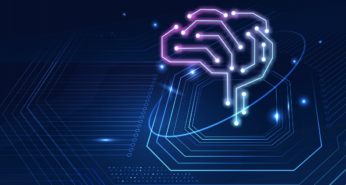Accurate product information and the right tools to use and leverage it are key to any customer service organization’s efficiency. Having this done right has a major impact on your support agents’ work and can dramatically ease their job – not to mention boost customer satisfaction.
Still, accessibility, findability, and shareability of the correct, relevant product documentation are recurring sources of complaints from customers and support agents alike. How do we solve this elementary but still critical pain point?
Content Delivery Platforms (CDPs) are designed to serve this purpose: they collect all technical documentation, deliver it in real-time where it’s needed, and enable interactions with product information that boosts product knowledge and aids troubleshooting and adoption.
Here are four ways Dynamic Content Delivery improves your support teams’ efficiency and boosts your customer engagement.
1. Self-Service Documentation that delights both users and support agents
Self-service is not the answer to all customers’ issues. But it significantly helps solve many of them, particularly when it comes to basic questions that require only clear documentation and not deep expertise.
“Service leaders report that as much as 40% of today’s live volume could be resolved in self-service channels”, Gartner reports in a recent survey. Still, only 9% of customers do fully solve their issues exclusively with self-service. Without a doubt, there is a huge potential here and major productivity gains can be expected through offering efficient information self-service.
CDPs are designed to provide an outstanding user experience with product content. They collect all the technical information a company owns and convert it into a central knowledge hub, a unique access point for accurate, reliable product information available on-demand. CDPs such as Fluid Topics benefit from embedded self-service portals that can be up-and-running in no time and offer AI-powered search engines to makes documentation searches effortless.
For tech users, it’s often the preferred way to solve problems: by themselves, as long as they can find the information they need to troubleshoot their issues fast. The impact of implementing self-service portals for technical documentation is quick and significant.
“In the first month after launching Fluid Topics’ self-service portal we saw a drop in the number of service tickets of 34%!” reports Johannes Müller, Technical Documentation Leader at swissQprint.
Such case deflection has an incredible impact on support teams: less repetitive questions, more time to focus on issues that request true product expertise, and great satisfaction shared between customers and agents.
2. Faster resolution
Your customer support organization is a major consumer of technical documentation. To answer user questions efficiently they consult hundreds of different files, emails, and wikis, from dozens of different sources of information located in various systems. A unique source of truth for all technical information relieves this pain for support agents and removes the complexity of multiple searches in disseminated silos of information.
The central knowledge hub provided by CDPs can be accessed via different entry points, namely a website, documentation portal, connected application, or even chatbots. But the seamless integration with their helpdesk tools has the preference of support agents and their managers: single authentication into a unique system, the same user interface, be it Salesforce, Zendesk, or any other help desk software, and the power of the specific Fluid Topics features, all in one place. The search capabilities powered by AI across all documentation sources make a huge difference in particular.
“The search is amazingly fast and relevant”, says the Portal Product Owner at Napatech, a leader in Reconfigurable Computing Platforms and a long-time user of Fluid Topics.
Another software vendor reports that they measured a 60% time reduction to find information after they implemented Fluid Topics.
But the support process doesn’t end when the agent finds the information. Communication to customers can be greatly improved as well. Support teams spend an incredible amount of time recreating, copying, pasting content that already exists in documentation into new tickets or emails. CDPs such as Fluid Topics offer the possibility to link directly to the relevant content to respond to the users’ questions: no need to re-explain and no need to re-write, the deep links point to the piece of content that provides the precise answer to the question. If the reference content itself is edited, improved, or corrected, the link still works and points to the updated information, always fresh and relevant. A system of alerts can even notify support agents and users whenever the content is refreshed.
3. Reading your customers’ mind
The last thing customers want to hear when they call the support after investigating their problem alone for hours is “Have you read this?” or “Have you tried that?”. Indeed, most of the time, they’ve searched and read a good amount of information before they decide to call the help desk. But most of the time, the support desk has no information on how this technical documentation, mostly in the form of large PDFs, is used.
Dynamic Content Delivery opens new perspectives. CDPs embedding dedicated content analytics track all user interactions with technical content, down to the topic level: they trace where users click in a document, what they read and how long, where they bookmark content, and when that bookmarked content is revisited, all with full respect of privacy and security.
“No longer will a support agent need to inquire if a user has read the manual”
Overseeing the customer documentation journey at a glance and in real-time, the support agent will be able to eliminate options that have already been investigated, troubleshoot the issues faster, and point the customers to the content that brings relevant answers. Understanding the user journey with technical content drives a fluid, personalized support experience that is valued by both the customer and support agent.
Beyond an informed, reactive response from the support team to the users, dedicated content analytics embedded in CDPs enable predictive customer support. For instance, spikes in search terms volume for a particularly problematic phrase might suggest that there is in recurring issue or a difficulty with a given functionality that will generate peaks in support calls.
In this case, three proactive actions can be taken, depending on the source of the issue, to release the pressure on the help desk and improve the service delivered to customers:
- Promote the piece of content that provides the answer to this recurring question on the documentation portal. It’s often a good solution when dealing with a new feature, or a functionality that has gone through major changes, fixes, or updates. In Fluid Topics, the tiles system on the portal home page is a good way to point to the most searched content (see the demo here)
- Feedback to the documentation team. A review and update of the documentation might be necessary for smoother product use, including the addition of rich content like videos. Dynamic Content Delivery allows decoupling of documentation from product releases and enables the enrichment of content at any stage of the product life cycle so that improvements can be brought to the documentation anytime.
- Feedback to the product team in case an abnormal behavior of the product persists.
4. Continuous support teams enablement
Your support agents cannot be trained on all product lines, all versions, and all customizations upfront. Nor can they return to training classes every time a new product or release is made available. But one thing they do rely on is the latest version of the product technical documentation, also known as the most reliable and the most exhaustive source of knowledge for all supported products.
This is why real-time accessibility and top-notch findability of technical documentation are key to providing fresh, continuous product knowledge to the support agents. CDPs provide agents with a direct line to product and processes updates, in-context of the query they are working on, and contribute to the continuous enablement process.
This learning model is not meant to replace traditional training programs but rather to efficiently complement the learning process and deliver actionable knowledge when it’s most needed, i.e. in situation.
And as microlearning studies have shown, when information is delivered in small chunks and in the context of the problem at hand, the working memory is enhanced. It’s true for all of us but makes particular sense for people who are exposed to a wide variety of queries and situations all day long.
Conclusion
CDPs are fast to implement and work with the content you already have, and the help desk tools you already use.
Significant case deflection, faster resolution, proactive troubleshooting, and continuous agent enablement are the four benefits your support organization can immediately get from Dynamic Content Delivery.
The impact on your operations is extremely fast and immediately measurable. If you want to check the numbers, have a look at our ROI calculator and see how implementing a CDP makes great business sense for the support department and the whole organization.




